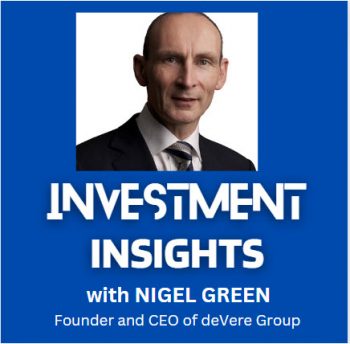 The US Federal Reserve has stopped sugar-coating it: stagflation is no longer a fringe fear. It’s a looming threat.
The US Federal Reserve has stopped sugar-coating it: stagflation is no longer a fringe fear. It’s a looming threat.
Last week’s sharp warning from Chair Jerome Powell confirmed what many of us in the global financial community have anticipated for months.
Slower growth, persistent inflation, and rising unemployment are converging in a way that should set off alarm bells for investors worldwide.
Make no mistake—this isn’t an abstract risk for the United States alone.
When the world’s largest economy hits a stagflation wall, the consequences are not contained by borders. The ripple effects will punch through supply chains, distort currency markets, and upend asset allocations from Dubai to Shanghai.
And this isn’t some theoretical hazard brewing in the distance. The Fed now concedes that inflation is proving sticky, particularly in core measures like PCE, which remain well above target.
At the same time, the US job market is flashing warning signs. Jobless claims are rising, wage growth is softening, and business investment is stalling.
All of this might be manageable in isolation. But factor in President Donald Trump’s erratic trade policies —and we’ve got a textbook case of stagflation.
The central bank is finally saying it aloud, but investors should have already been acting.
The market reaction has been swift, if uneven. Treasury yields are lurching, the dollar is wobbling, and equities—particularly those tethered to domestic consumption—are jittery. But this isn’t just short-term turbulence.
What we’re staring at is a structural shift in the macro environment, and that demands serious portfolio recalibration.
Historically, stagflation is one of the most difficult regimes for policymakers and investors alike. The tools to fight inflation—higher rates—exacerbate the slowdown. The tools to support growth—lower rates—add fuel to price pressures. And when trade policy is a wild card, the typical playbook goes out the window.
This isn’t the time for complacency. Investors must take a hard look at their exposure to inflation-vulnerable assets. Portfolios overly reliant on growth stocks or consumer-sensitive sectors could suffer disproportionate damage. Similarly, bond allocations must be stress-tested against the possibility of rates staying higher for longer—not just in the US, but globally, as central banks wrestle with the implications.
It’s not all bleak. These environments, while punishing for the unprepared, create powerful opportunities for those who pivot fast and decisively.
Real assets, especially those with pricing power, tend to shine. Commodities, infrastructure investments, and certain inflation-linked securities offer insulation and, in some cases, outperformance.
International diversification becomes not just a strategic choice, but a defensive necessity. If the dollar comes under sustained pressure due to policy contradictions or ballooning deficits, having exposure to foreign currencies and global markets will be vital.
Trump’s trade policies have historically injected enormous volatility into emerging markets, but selective positioning there, especially in commodity-exporting nations, could prove highly beneficial.
The psychological factor also matters. Prolonged stagflation saps consumer and investor confidence. That erosion in sentiment can be just as damaging as the economic data.
Positioning portfolios to withstand not just the numbers but the mood swings is a crucial aspect of long-term strategy.
This is where high-quality financial advice becomes essential. Every investor’s needs are different—there is no one-size-fits-all response to a stagflation scenario. But doing nothing is the worst option of all. Those who wait for clarity will miss the window to protect their wealth.
What the Fed has now publicly acknowledged is not news to those of us who have been watching the data and reading the political signals.
For more than three months, we’ve been warning clients that the combination of sticky inflation, trade disruption, and slowing output would corner the economy into a stagflation trap.
Now that the central bank has said the quiet part out loud, global investors must respond with urgency and precision.
Markets hate uncertainty, but they loathe paralysis even more.
The coming months will not be calm. Policy may become erratic. Headlines will be loud. But amid that noise, opportunity exists, especially for investors who remain active, informed, and forward-thinking.
This is not a drill. Stagflation in the US is real, it’s contagious, and it will test every assumption investors have made about the post-pandemic recovery.
Now is the time to seek expert advice, reassess risk, and build a portfolio that doesn’t just survive turbulence, but capitalizes on it.
Nigel Green is deVere CEO and Founder
Also published on Medium.



